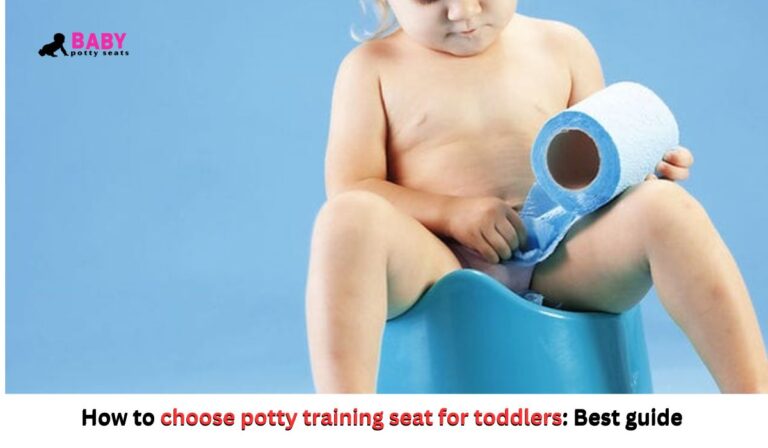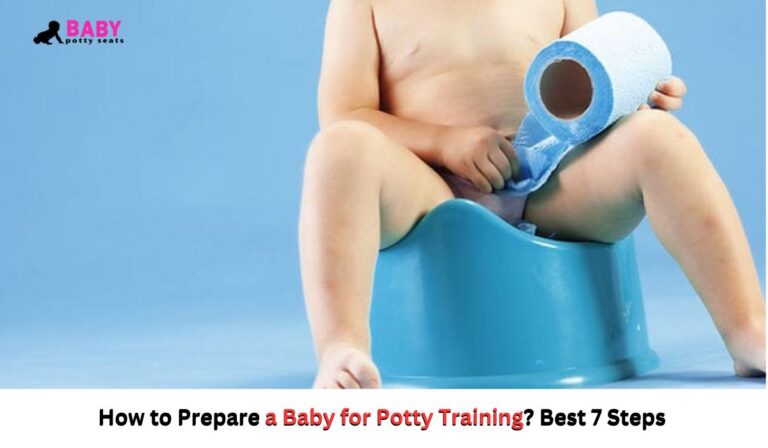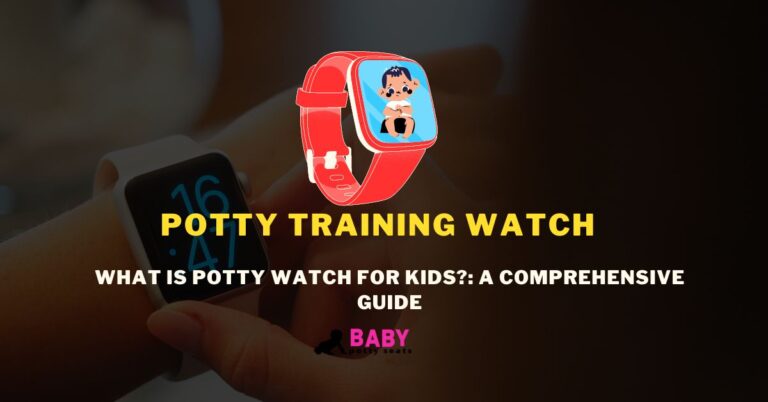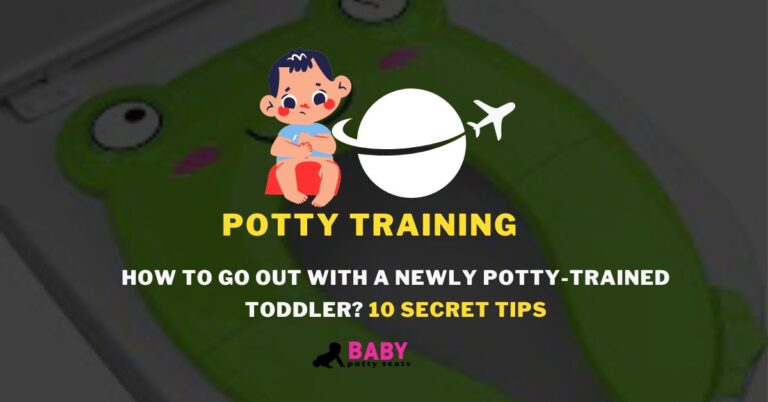To make the toddlers’ potty training journey a successful breakthrough, mommies must be considerate about the readiness of their little munchkins.
Ask yourself, first, about the physical, mental, and behavioral signs regarding the potty training readiness of your child. Without their preparedness, there is no question about going for training because it will give you and your child nothing but frustration.
The importance of potty training can not be negated. As parents, you want to potty train your toddler as soon as possible to open a new era of success in their life. But remember, it is not the one rule-fits-all scenario and will differ for every baby angel.
Therefore, in this piece of writing, we did our best to highlight the complete set of instructions for first-time parents to understand the signs of readiness of kids. This will surely help answer the straightforward question, “When is my baby ready for potty training?”
Signs – When is Baby Ready for Potty Training?
When is your child ready for potty training? It is a critical question if you want to make the potty training journey of your kid a success. Here are the signs:
1. Age milestones (typically 18-24 months)
How do you know when a baby is ready for potty training? Age can be a thing you should consider. Recognizing the indications of readiness is a critical skill for parents to potty train their kids. Kids mostly show signals between the ages of 18 to 24 months. Highlighting the exact age is no parameter. It is something very unique and varies from child to child. Parents should be more flexible and respond according to the uniqueness and temperament of their toddlers.
Potty training is, no doubt, a significant achievement in the life of every toddler towards success. Patience and consistency is the key to success in this milestone. Be discerning about your kid’s bladder and bowel control, curiosity to independence, understanding words related to toileting, and showing comfort in sitting on the training seat or regular toilet.
2. Physical signs
Parents, don’t jump directly to potty training just because everyone around you is saying so. You must pay close attention to the signs shown by your toddler. Showing signs is their way of telling that they are ready. Therefore, here are some physical indicators from your little ones.
Ask yourself a few questions: Can my baby have any control over his bladder and bowels? Does his diaper stay dry for long periods? Do they show some regularity in bowel movements? If the answer to these questions is yes, you are good to go. Moreover, you will notice that your kid is interested in using a toilet seat or a potty chair.
3. Behavioral signs
Behavioral considerations are essential before embarking on your toddler’s potty training journey. Does your baby feel uncomfortable with dirty diapers? Does he show a desire to be clean? Is he showing increased independence in other activities? A positive response to these answers is another sign that you should consider potty training for your toddler.
A timely response to behavioral symptoms can lead to successful training for toddlers and parents. As a parent, you should know when a child is not ready for potty training and when exactly you should go for it.
4. Communication signs
Kids also show some communicative signals when they are ready for toilet training. If your baby asks to go to the potty or uses words related to toileting, it indicates your child’s readiness. Identifying these signs is a crucial step in the journey of potty training. It would be the best time to get started because potty training gives your child freedom and confidence.
Things to do to set up the environment for kid potty training
How to start potty training? Preparing your kid for proper toilet training comprises a combination of physical, emotional, and environmental readiness. Once you see the readiness signs in your kid, then the following are the things given below to prepare your kid:
Introduce the concept to your kid
Make your kid familiarised with the whole concept. Please explain it to your kid in a friendly manner. You can get help from different potty training books and videos as well. Explaining will make the process easier for both kids and parents.
Involve your kid in the process
The more your kid gets involved in potty training, the greater the chances of success will be. Let your child make the decisions and ask your toddler for their choice regarding the equipment and clothing used in the journey.
Choose appealing and safe equipment
Choosing the right equipment is one of the most important elements to consider to make the potty training journey comfortable and more accessible. The attractive design and safe and comfortable potty seats will attract the kids. Ask the choice of your kid before making decisions.
Use positive reinforcement
Shake off all the frustration and anger while dealing with your kid. Celebrate the little achievements of your kids to motivate them. Set a reward system in this journey to complete it.
Setting up a potty training-friendly environment
Be mindful of the timing, especially. Choose a time when there are fewer distractions in the surroundings. A peaceful environment will help your child to get involved in learning the process.
Keep yourself calm, patient, and friendly.
Create a routine and show consistency
Make a consistent routine. Set regular intervals for going to the toilet. Set the routine to take them to the bathroom before sleeping and after waking up.
Choose comfortable clothing
During the potty training phase, your kid’s clothing must be comfortable. Avoid tight jeans and tight pajamas; instead, use loose ones. Clothes that are easier to remove should be prioritized.
Overcoming the challenges during potty training:
Resistance and regression
No doubt, resistance and regression from kids are common challenges parents face. In case of resistance, use a positive approach instead of showing anger. Understanding and dealing with the challenge correctly is the key to success in this journey. Try to figure out the reason for resistance. Talk with your baby and try to understand him. To overcome this, try positive reinforcement and rewards. If regression persists, give your kid a more supportive environment and deal with empathy.
Fear of the potty seat
Fear related to potty training can be due to various reasons like negative past experiences, unfamiliarity with the process, discomfort, and size incompatibility. To overcome this challenge, move gradually in the process of training. Introduce him to the usage, show him videos, and provide him with attractive and comfortable seats. Add fun and engaging elements to the process. Moreover, ask him to choose a seat of his favorite color and design for himself. It will work to reduce fear and add interest to the kid in the journey.
Constipation and other health issues
You can deal with this challenge only through a thoughtful and gentle approach. Never take the health of your kid for granted. A proper diet should be taken to avoid constipation and ensure comfortable bowel movements. Dietary fibres and enough water consumption are necessary to promote good gut health.
Add physical activity to the routine of kids to promote digestive health. If the issue persists, go to a healthcare professional or a doctor to adjust the routine and give them proper treatment to avoid further complications. Healthcare professionals usually suggest the squatting position rather than sitting while potty. Therefore, use step stools or ladder-based seats to promote appropriate positioning and health.
Sibling rivalry and peer influence
It mainly occurs when your kid attends daycare, interacts with a group setting, or has a sibling with a smaller age gap. Kids usually resist by taking influence from others. In such a case, give your kid a positive peer influence. Promote toilet training equally for both siblings. To create a supportive environment, try to remove harmful things.
Final lines
Parents must consider their kids’ readiness before starting potty training, rather than just winning the race with their neighbor. There are various physical, behavioral, communicative, and other signs to consider before saying yes to the potty training journey. Your patience and support matter a lot for the success of your kid. Understand the challenges of fear and anxiety related to it and seek the best possible solutions. In the end, it is the most significant milestone to achieve. Happy potty training to you all, and I hope you get the answer to your question: “When is a baby ready for potty training?”
Related Article: How To Prepare A Baby For Potty Training? Best 7 Steps









2 Comments
Comments are closed.